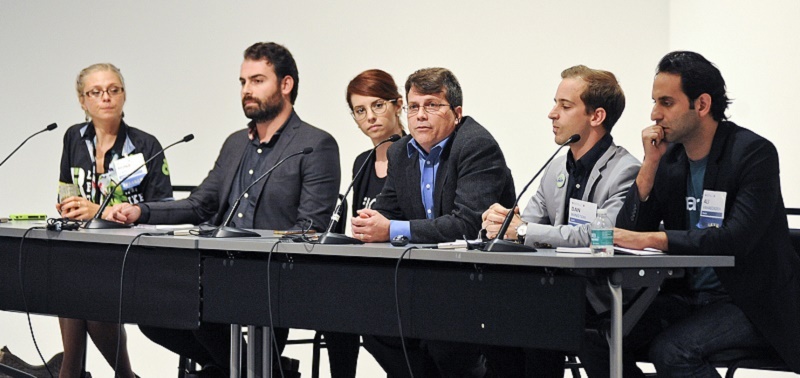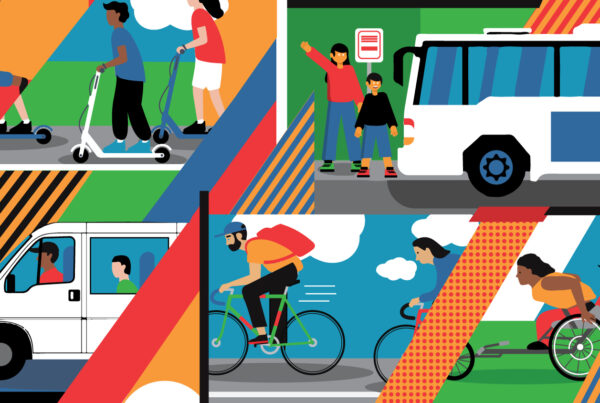From Chariot offering crowd-sourced routes to Leap swapping out wheelchair-accessible seating for leather armchairs (and subsequently getting shut down by the California Public Utilities Commission), microtransit has been one of the most buzzed-about shared mobility trends of 2015.
At the national shared mobility Move Together, leaders from several microtransit providers including Bridj, Chariot, Split and Via gathered to discuss how this unique new mode – not quite ridesourcing, not quite transit – is reshaping urban mobility.
As microtransit evolves, it promises to have important implications for public transportation, including in areas such as:
Dynamic Routing Technology
Microtransit providers adjust routes and stops in real time by aggregating demand to provide the most efficient possible service. Each day, these companies work to build and refine the complex algorithms that make those rides possible. While they’re currently focused on serving dense urban areas, many in the industry have speculated on the value of adapting the dynamic routing model to better serve suburban communities and other low-density areas where demand is elastic, and that are difficult to serve efficiently using traditional fixed route service. Once they have perfected their technology, today’s microtransit providers may be able to expand their profits by licensing their algorithms to public transit agencies that serve disbursed populations.
Public Private Partnerships
Instead of licensing their technology, microtransit providers may also choose to work hand-in-hand with the public sector to serve riders directly. These operators could provide dynamically routed bus service or offer more efficient alternatives for paratransit, “dial-a-ride” transport and other important but inefficient forms of public transportation.
At Move Together, Bridj CEO Matt George announced that his company has plans to launch a partnership in early 2016 that will feature transit agency employees driving co-branded Bridj vehicles. We hope to have more to share here soon!
First and Last-Mile Connections
In addition to offering near door-to-door service, microtransit can also provide commuters with first/last mile connections to existing transit systems. For instance, during the Move Together microtransit panel, Chariot Founder & CEO Ali Vahabzadeh revealed that 20 percent of his company’s riders use Chariot to travel between their homes and BART stations in the San Francisco Bay area. Whether it’s using a Chariot or a Lyft Line, using new, more efficient ways to connect with transit for long-haul trips will help better sustain our cities’ legacy transportation systems.
Providing More Options
With their cold-pressed juices and wifi, today’s microtransit services don’t fit within everyone’s budget. Similar to San Francisco’s tech shuttles, however, they’re likely still doing their part to keep people from driving. Studies suggest new dynamic ridesharing services like microtransit have the potential to reduce single occupancy vehicle trips and decrease congestion in cities – all with relatively low overhead costs and high customer satisfaction.
In combination with other services, the flexibility of microtransit may play a key role in helping people live well without owning a car. The challenge for cities, operators, and advocates moving forward will be how to regulate these services – and how to leverage their benefits and tech for the greater public good.
For more information on the Move Together summit, be sure to check out our recap on Storify and subscribe to SUMC’s newsletter.


